Nature’s first green is gold,
Her hardest hue to hold.
Her early leaf’s a flower;
But only so an hour.
Then leaf subsides to leaf.
So Eden sank to grief,
So dawn goes down to day,
Nothing gold can stay.
….Unless it’s golden Bordeaux!
What is Bordeaux Golden?
When people mention Bordeaux, the first thing that comes to mind is red wine, but that is disppointing since golden wines have a long history from one of the most renowned wine regions in France. Golden wines typically see stainless steel and/or cement and very little, if any, oak. Many that know of golden Bordeaux wines, have an opinion that they are all sweet wines. Although there is a sweetness to them, these wines are more versatile than most think.
These wines are very complex with many layers and can be aged for many years thanks to the concentration within the grapes. As they wines age, the actual sweetness levels do not change, but the impression of sweetness does. Aged Golden Bordeaux wines will become more savory and earthy. In a 2012 Washington Post article by Jason Wilson, Xavier Planty, general manager for the premier cru Chateau Giuraud, said I think we need to move beyond the false idea that “sweet” equals “unsophisticated.” Sauternes is “sweet” in the same way that “Moby-Dick” is a sea story. True, but there’s more to it than that.
What Makes Golden Bordeaux
Semillon and Botrytis! That is the magic elixir creating wonderful wines. Semillon is an easy grape to grow. What is most interesting about it is that its number one flaw, is actually what makes it perfect for golden Bordeaux. It is a thin skinned grape and this characteristic is what allows it to be attacked by the botrytis rot. The spores enter the individual grapes but because of the skin’s texture, it is not broken. Once the spores enter the grape, dehydration begins which causes the grapes to shrivel and change color thanks to actual compound changes that occur within the grape. Acids are metabolized and the sugar is compounded, which leads to dramatic changes in the flavors within the grape providing the sweet fruit, roasted nut and honey coated, tropical flavors.
There are some golden Bordeaux wines made from 100% Semillon, but most wines are made up of at least 80% Semillon and blended with Sauvignon Blanc which provides the crisp acidity and brings an extra freshness to the wine. Within the blend, there can also be Muscadelle. Although it is not a predominant member of the trio, it does add a little spice and seasoning to the wine along with providing some body.
Botrytis ( Botrytis cinerea) is a necrotrophic fungus that affects grapes. It can be a positive or a negative depending on the environment. Negatively, if humid conditions remain consistent, grey rot will occur and this will typically lead to the loss of the affected bunches, but if drier conditions follow wetter, than noble rot occurs and we get the sublime dessert wines.
Sauternes
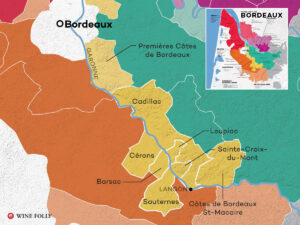
The golden Bordeaux region is a sub-region of Graves known as Sauternes. There are only five communes, each hugging the all important Gironde River, that are allowed to produce wines under the Sauternes label. These villages are Sauternes, Bommes, Fargues, Preignac and Barsac. Barsac can label their wines under the Sauternes or Barsac appellation.
As with all appellations, there must be something that distinguishes them from each other. In the case of Sauternes and Barsac, it is the soil. Sauternes’ soil is composed of gravel and sand and is a bit hilly, while the Barsac tends to have a bed of limestone and red clay. Comparing the two wines, Barsac tends to have more acid and a bit more elegance. You can expect to find flavors of pineapple, peaches, flowers, pears, apricots, nectarines, orange, vanilla, custard, butterscotch, coconut and of course honey in the wines of Sauternes. If your palate craves caramel, brioche, butterscotch and candied orange characters then look to Barsac.
There is a bit of lore behind how the sweet wines of Sauternes became into existence. As with most things in life, they both occurred thanks to serendipity. The first story took place in 1836, when a German Bordeaux wine dealer decided to wait until the end of the fall rains to pick his grapes. When the rains stopped and the sun finally returned, he found his bunches dried, shriveled and filled with noble rot. He decided to make the wine anyway and violà!
The second version of golden beauty took place a bit later in 1847 when the Marquis de Lur-Saluces (owner of Château d’Yquem) was traveling to Russia. Prior to his leaving, he left explicit directions that harvest should not begin until he returned. Unfortunately, he was delayed and upon returning he found the noble rot was substantial. The wine turned out to be an outstanding vintage and was greeted with extremely high praise.
Medoc vs Sauternes
The famous 1855 Classification of Medoc wines, also took into account Sauternes
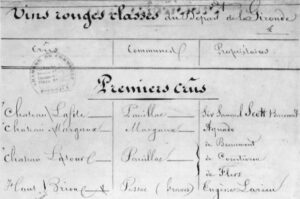
and Barsac. The red wines of Medoc were categorized into 5 levels while the sweet white wines were classed into three. Twenty-seven properties were classified. Chateau d’Yquem is the only Premier Cru Supérieur. There are eleven Premier Cru (equivalent to First Growth) and fifteen Deuxièmes Crus, which are Second Growth wines.
There is a saying, “In Medoc, it takes a vine to make a bottle of Medoc while in Sauternes it takes one vine to make a glass.” The noble rot that affects the grapes causes them the dehydrate and shrivel. Each bunch must be singled out and harvested at the perfect time for that bunch making harvest more demanding than in the Medoc and as a result these wines are often sold in 375ml.
Bordeaux vintages are declared because of the red wines, not the whites. For example the 2013 was deemed a less than stellar year for Bordeaux, however, the golden Bordeaux wines are exceptional. Even in years where Sauternes and Barsac had challenges, like in 2018 where there was quite a bit of grey rot, thanks to the painfully meticulous harvesting procedure, the bad rot was singled out and although the quantity was low, the quality was still exceptional. When deciding on which vintages to collect, you don’t necessarily want to follow the red wine vintage chart.
The Wines
I was part of a Snooth virtual chat involving eight golden Bordeaux wines. (I know, you can start hating me now) When researching these wines, it is often suggested that they are paired with Blue cheese, foie gras, Asian dishes, chicken, sweet flavored vegetables and fruit-themed desserts. Many feel they shouldn’t be paired at all and just enjoyed on their own. But in this tasting, we were shown that these wines could and should be enjoyed with savory snacks, especially those that lead with salt and spice. 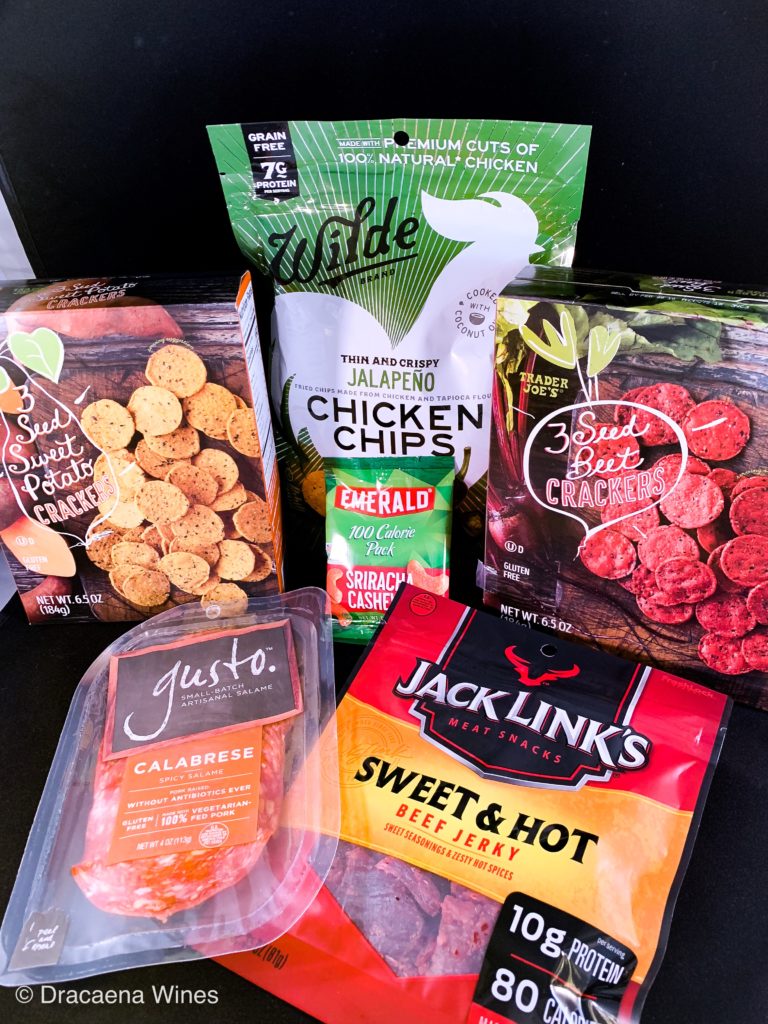
Château Manos Cadillac 2016 (SRP: $14)
The Cadillac appellation, lies on the right bank of the Gironde River south of Bordeaux heading towards Sauterne. It was created in 1973 within the Premières Côtes de Bordeaux appellation. The territory consists of 22 communes, from Baurech to Saint Maixant and is approximately 150 hectares. Being a young wine, the fresh and zesty tropical fruit was apparent, with just slight savory undertones.
Château Loupiac-Gaudiet 2016 (SRP: $13)
Loupiac, also on the right bank, is located on the northern bank of the Gironde river, 18 miles (30km) south-east of Bordeaux. It is double the size of Cadillac with 350 hectares. When the two rivers come together, there is a blending of warmer and cooler waters. This combination provides morning mist that is ideal for botrytis to form on the grapes, but since the sun comes out mid morning and afternoon the moisture is dried up and instead of the black rot, the region is presented with the beautiful noble rot. Once again, as a younger wine, tropical fruit is eminent along with apricots and nectarines. There is an underlying savoriness of mushroom and earth.
Château la Rame Sainte Croix du Mont 2015 (SRP: $20)
Located on the right bank south of Loupiac, the soils of Sainte Croix du Mont are limestone and fossilized limestone. The properties are owned by small families. The appellation extends over 500 hectares and is almost directly across the river from Sauternes. The wine had flavors of orange marmalade and honey and was more rich than the previous wines.
Château du Cros Loupiac 2014 (SRP: $15)
With a few years in bottle, this wine is slightly darker. The savoriness is beginning to show more predominately. Floral aromas with citrus notes along with touches of honey and toffee flavors. A bit more acidity in this wine. Unlike the previous wines, this wine has just a touch of Muscadelle (5%) which provides some body.
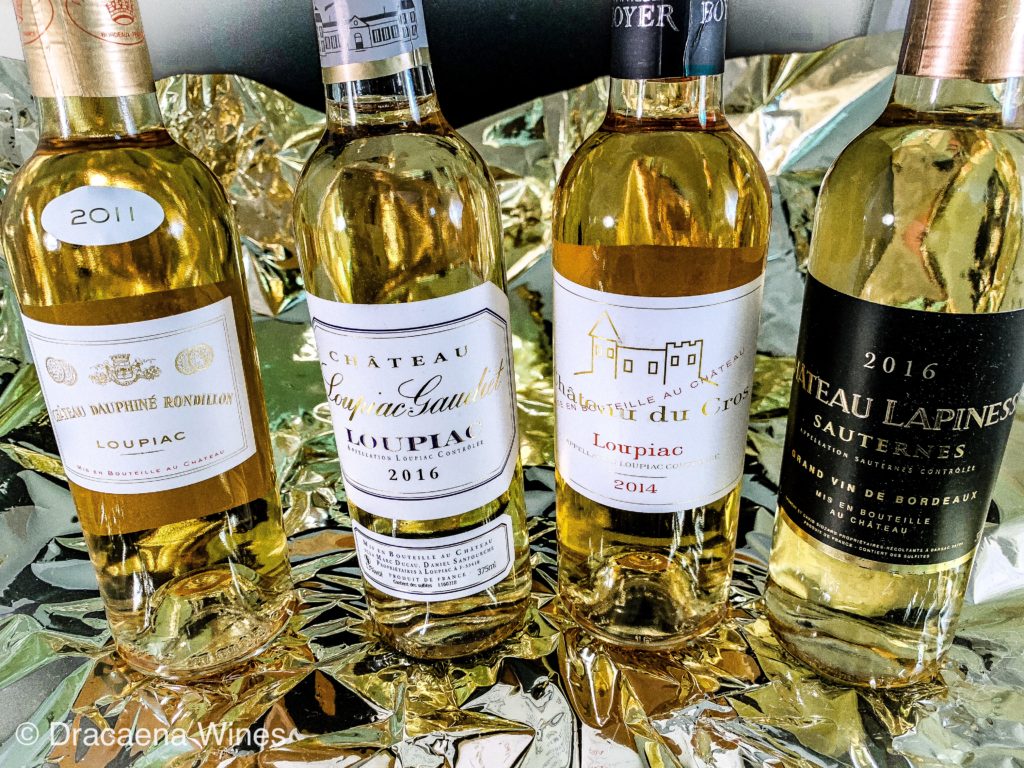
Château Dauphine Rondillon Loupiac 2011 (SRP: $28)
2011 was an ideal year for botrytis. The savory flavors are truly coming into their own with this wine. Mushroom greet you along with the ripe stone and tropical fruits. There is also a hint of spice and honey.
Château Lapinesse Bordeaux Sauternes 2016 (SRP: $29)
Welcome to the Left Bank! To qualify as a Sauternes, a wine has to have an alcohol level of at least 13%, and be sweet upon a tasting exam. Château Lapinesse is owned by a single family. The wine is 100% Semillon and is full bodied with a hint of sweetness and a lot of citrus. It is extremely open and ready to drink now.
Château Filhot Sauternes 2015
Château Fillhot is one of the fifteen Deuxièmes Crus. Although this wine is very drinkable now, it is recommended that this wine lay down for a while. Decanter recommends drinking through 2035 and gave it a score of 91! The wine is rich and full bodied, with flavors of baking spices and some orange creme.
Castelnau de Suduiraut Sauternes 2006 (SRP: $45)
Castelnau de Suduiraut is the second label of Chateau de Suduiraut a Premier Cru. This wine is a blend of 65% Semillon and 35% Sauvignon Blanc and has a beautiful deep amber hue that shows its age. A rich wine filled with butterscotch and earth along with a beautiful marmalade sweetness. The sweetness has oxidized into a lovely leather.
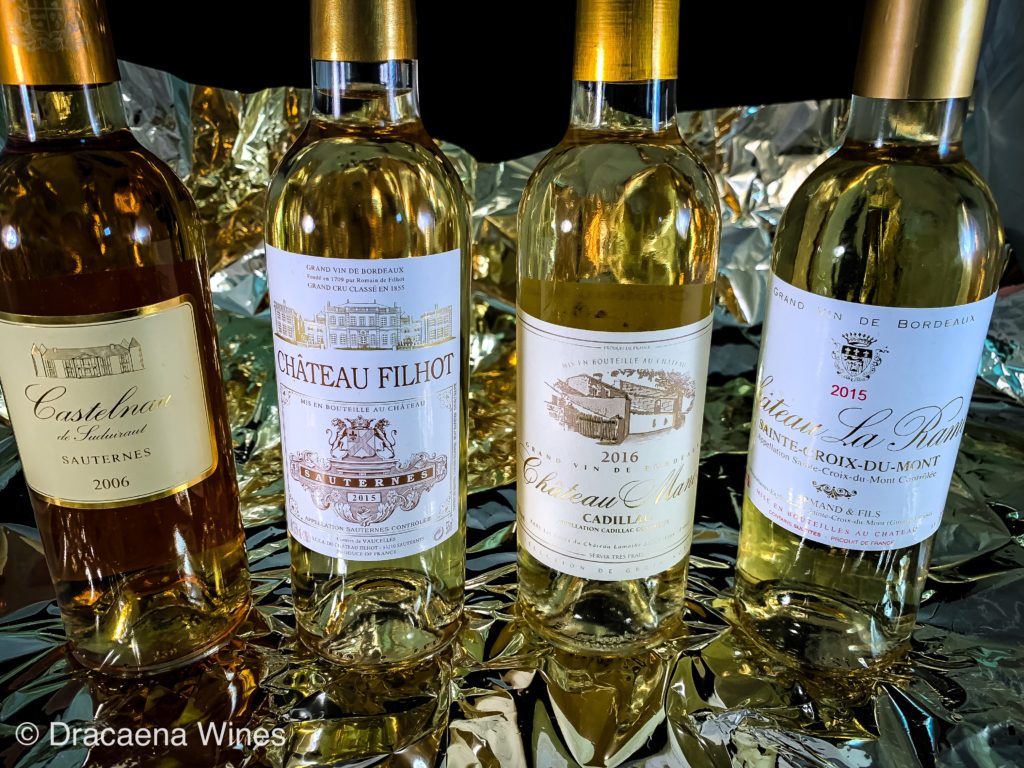
Explore The Complexity
I hope that I have piqued your interest in the sweet white wines of Bordeaux. If you would like to find out more about these wines or to purchase them, they are all available on Snooth’s website.
~Sláinte!

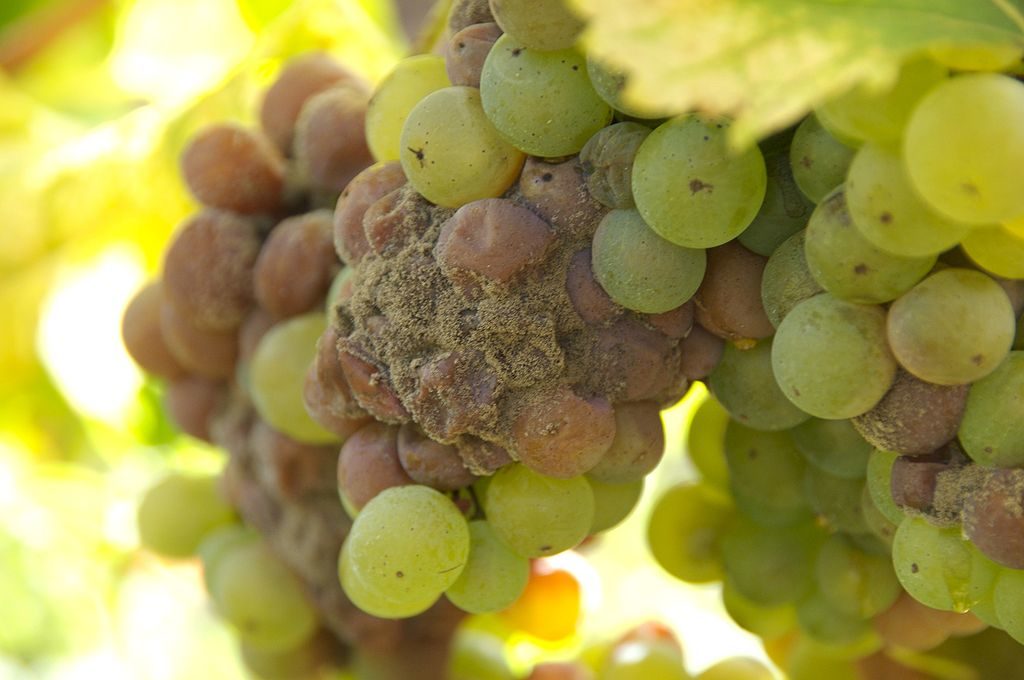
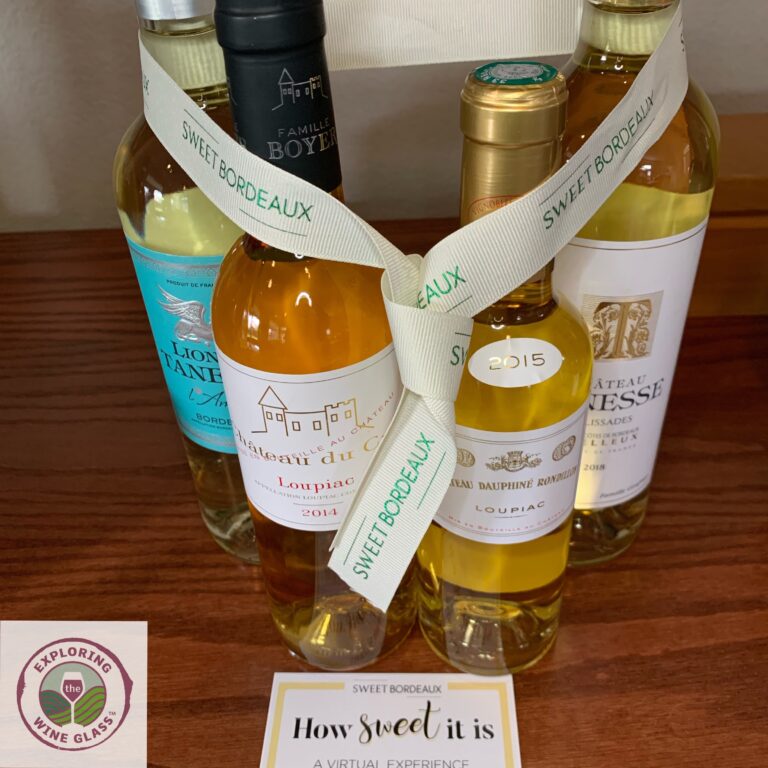
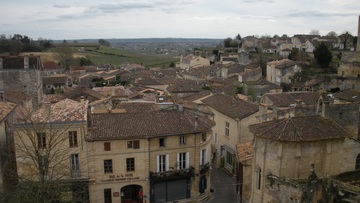
NIce in-depth post, Lori. And I like the play on the title!
Thank you so much Anatoli!